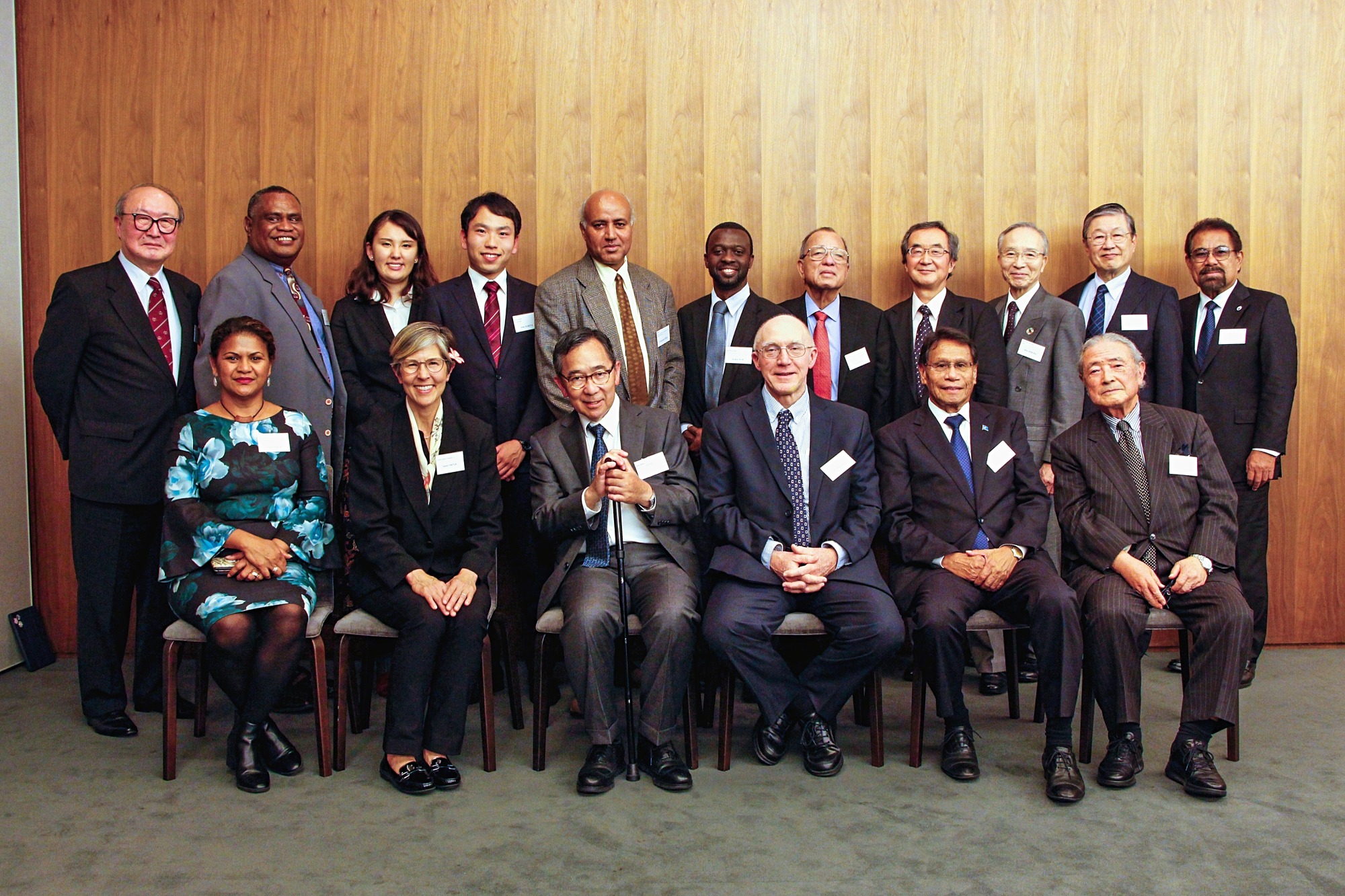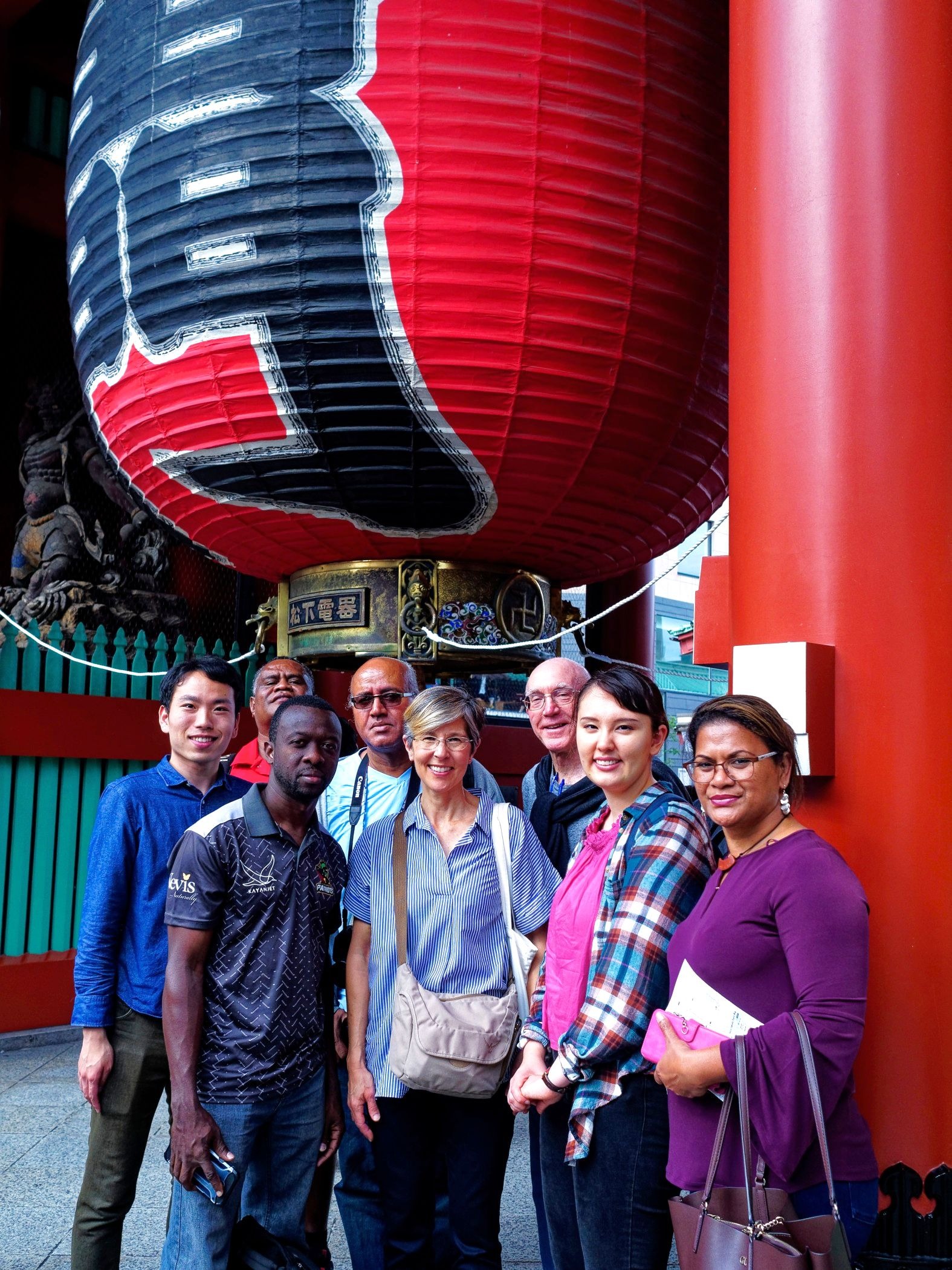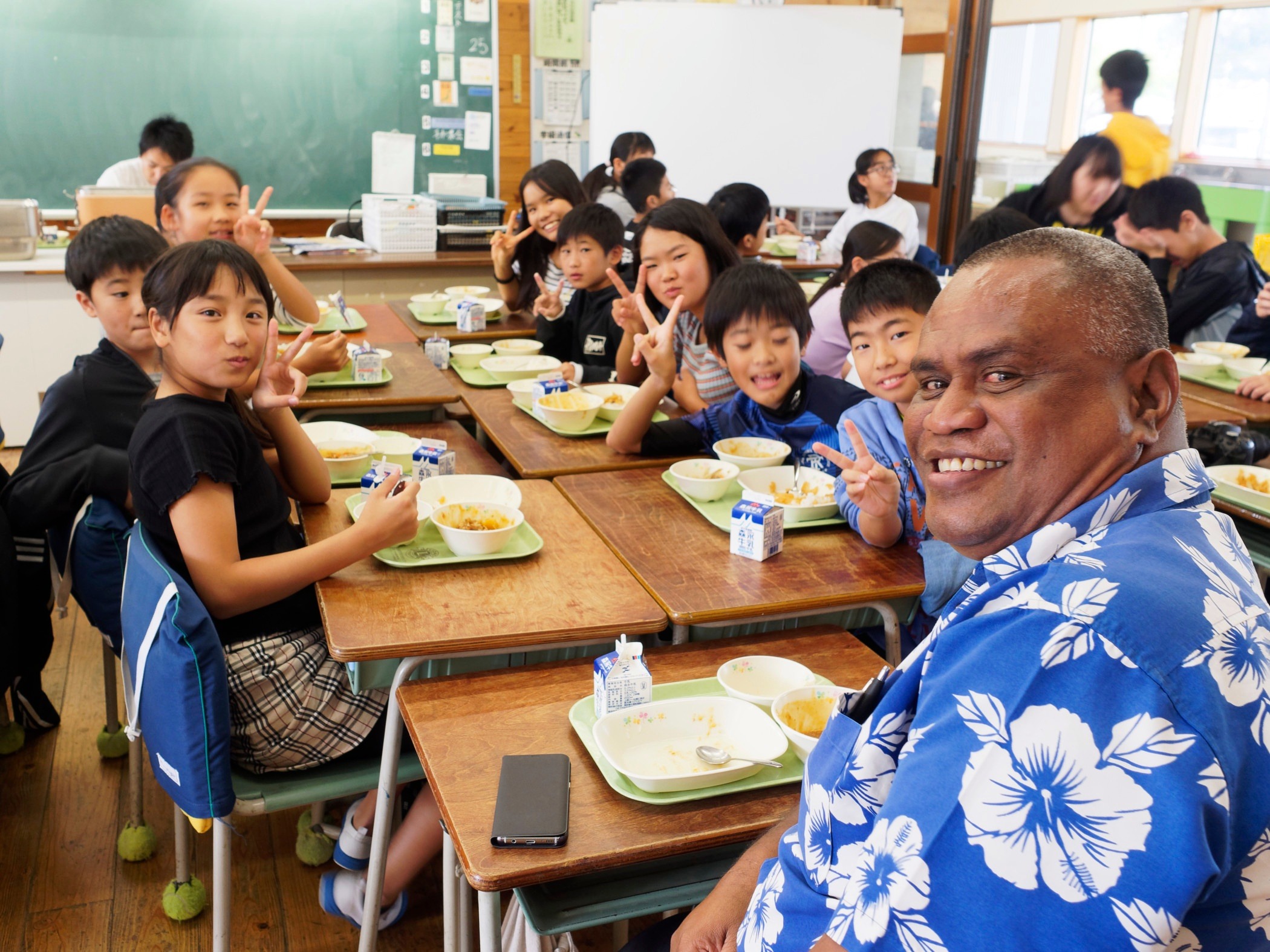Pacific & Caribbean Journalist Fellowship 2019

(At the Closing Ceremony)
The program this year was held for twelve days from October 19th to 30th. The participants of this year’s program were Ms. Leilani Reklai from Palau, Mr. Iliesa Tora from Tonga, Mr. Andre Huie from St. Kitts and Nevis, and Mr. Christopher Serju from Jamaica. In addition to these four members, long-time journalists in the Asia South Pacific region Mr. Floyd Takeuchi, Ms. Dawn Matus, and Mr. Giff Johnson joined as program coordinators, giving advice to the participants in terms of reporting and composition of articles.
Following in the footsteps of previous year, two university students attended as part of the Journalism Internship, Ms. Nicole Reina Peterson from ICU and Mr. Hiroki Kubota from Sophia University. This was an excellent opportunity for the students to see how professional journalists first report and then compose their articles. It was also a good opportunity for the participating journalists to talk with and get to know the ideas and opinions of their younger Japanese contemporaries.
The journalists visited Tokyo, Kanagawa, Kumamoto city and town of Mashiki in Kumamoto prefecture, and Kume-jima Island in Okinawa, reporting and composing articles as they traveled. Every day the journalists performed numerous interviews, gathering material on subjects they were interested in on that specific day, and writing their articles (in the program articles are referred to as ‘stories’). All completed articles were looked over and commented on by the program coordinators, and then sent off to and printed in each journalist’s home newspaper/news outlet. The journalists were particularly happy to meet and talk to many people in the town of Masihki-machi, Kumamoto, including but not limited to government officials, citizens affected by the earthquake, NGOs giving assistance, etc. The student interns also composed several articles, as well as wrote the personal profiles of the four participating journalists.
The day after arriving in Japan, the journalists attending a plenary session, where participants gave self-introductions and took part in icebreaking activities. After the session the group went to Asakusa, where they had the chance to experience Japanese culture.
On October 21st, the journalists visited FPCJ, where APIC President Peter Sato and Director-General Megumi Araki hosted the orientation program. In accordance with the coronation ceremony planned to take place the following day, the participants listened to a lecture on the Japanese Imperial family, deepening their knowledge of the Japanese Imperial system and royal family. Afterward they visited the Japan Meteorological Agency where they learnt about disasters and disaster prevention in Japan. The last activity of the day was visiting JICA (Japan International Cooperation Agency) where they interviewed people about challenges regarding the environment and disasters, as well as on the topic of international cooperation.
On the 22nd the journalists participated in a discussion at FPCJ with students from Tokyo University, Hosei University, and Tokyo Metropolitan University about their opinions on and awareness of the Imperial family. Unfortunately, the parade was postponed and they were unable to see the family up-close, but it was a good opportunity for the journalists to exchange opinions with Japanese students and further their understanding about Japanese culture.
The next day the journalists visited Yokohama City Resources & Waste Recycling Bureau where the group learnt about Japan’s waste disposal and recycling methods. The journalists also visited the Tsurumi Resource Recovery Center, where they focused on garbage separation and resource recovery, as well cooperation from local residents. Afterward the party visited Tokyo Skytree, learning about and conducting interviews about building techniques, disaster prevention, and energy management. (Peterson)

(At Kaminari-mon Gate, Asakusa)
On the 24th the group moved on to Kumamoto, visiting the town of Mashiki-cho and Kumamoto city.
In Mashiki-cho, the journalists visited the town hall, Mashiki-cho Techno Temporary Housing Block, disaster-hit public housing Tahara 2nd housing block, Mashiki-cho elementary school, and Kumamoto Yu-Kyu no Kai, which aims to rebuild the lives of those directly affected by the Kumamoto earthquake disaster. At the town hall, the journalists listened to an explanation on the situation directly after the earthquake hit in 2016, and about recovery efforts. At the temporary housing blocks journalists asked the residents how they are spending their days and their current ways of life after moving into the housing blocks. The journalists ate lunch together with the students during their visit to the Mashiki Central Elementary School, enjoying their time talking with the children. Lastly, at the NGO Kumamoto Yu-Kyu no Kai, they learnt about how the NGO started and the range of its activities, saying that it is important for everyone as part of society to take responsibility and become involved with those who are affected by the earthquake in 2016.

(At Mashiki Central Elementary School, Kumamoto)
On the 27th the group changed cities and visited the island of Kume-jima in Okinawa. The journalists spent their first evening on the island with locals, enjoying local cuisine and listening to live performances of the shamisen.
The following day, the journalists received a talk on the “Kume-jima Model” of reviving the town from various perspectives, including using the abundant deep-sea water for power generation, cultivating sea grapes (type of edible seaweed), prawns, and other seafood for production, as well as additional examples. Afterward, they visited the Okinawa Prefectural Deep-Sea Water Research Institute, a prawn, sea grape, and oyster production facility, an Okinawa cosmetics company that uses deep-sea water for its products, and saw how deep-sea water is being used throughout the town. Lastly, at Kume-jima distillery, the group listened to a talk about the process of making awamori, a distilled liquor native to Okinawa using long-grained rice. On the last day of the program, the journalists experienced traditional Japanese culture at the Koomon in Tokyo, where they tried on Kimono and sat for a Japanese tea ceremony. The Journalist Invitation Program’s closing ceremony and following dinner reception was hosted by APIC and took place that evening.
WHAT'S NEW
- 2025.12.25 UPDATE
PROJECTS
"Barbados A Walk Through History Part 17"
- 2025.12.2 UPDATE
EVENTS
"Pacific & Caribbean Student Invitation Program 2025"
- 2025.10.30 UPDATE
EVENTS
"Support for the 2025 Japanese Speech Contest in Jamaica"
- 2025.10.30 UPDATE
EVENTS
"Invitation Program for the Director of Bilateral Relations of the Ministry of Foreign Affairs and Trade of Jamaica"
- 2025.10.16 UPDATE
EVENTS
"421st Lecture Meeting Regarding Global Issues"
- 2025.9.18 UPDATE
EVENTS
"420th Lecture Meeting Regarding Global Issues"
- 2025.8.28 UPDATE
PROJECTS
"Barbados A Walk Through History Part 16"
- 2025.7.17 UPDATE
EVENTS
"419th Lecture Meeting Regarding Global Issues"
- 2025.6.19 UPDATE
EVENTS
"418th Lecture Meeting Regarding Global Issues"
- 2025.5.15 UPDATE
EVENTS
"417th Lecture Meeting Regarding Global Issues"




